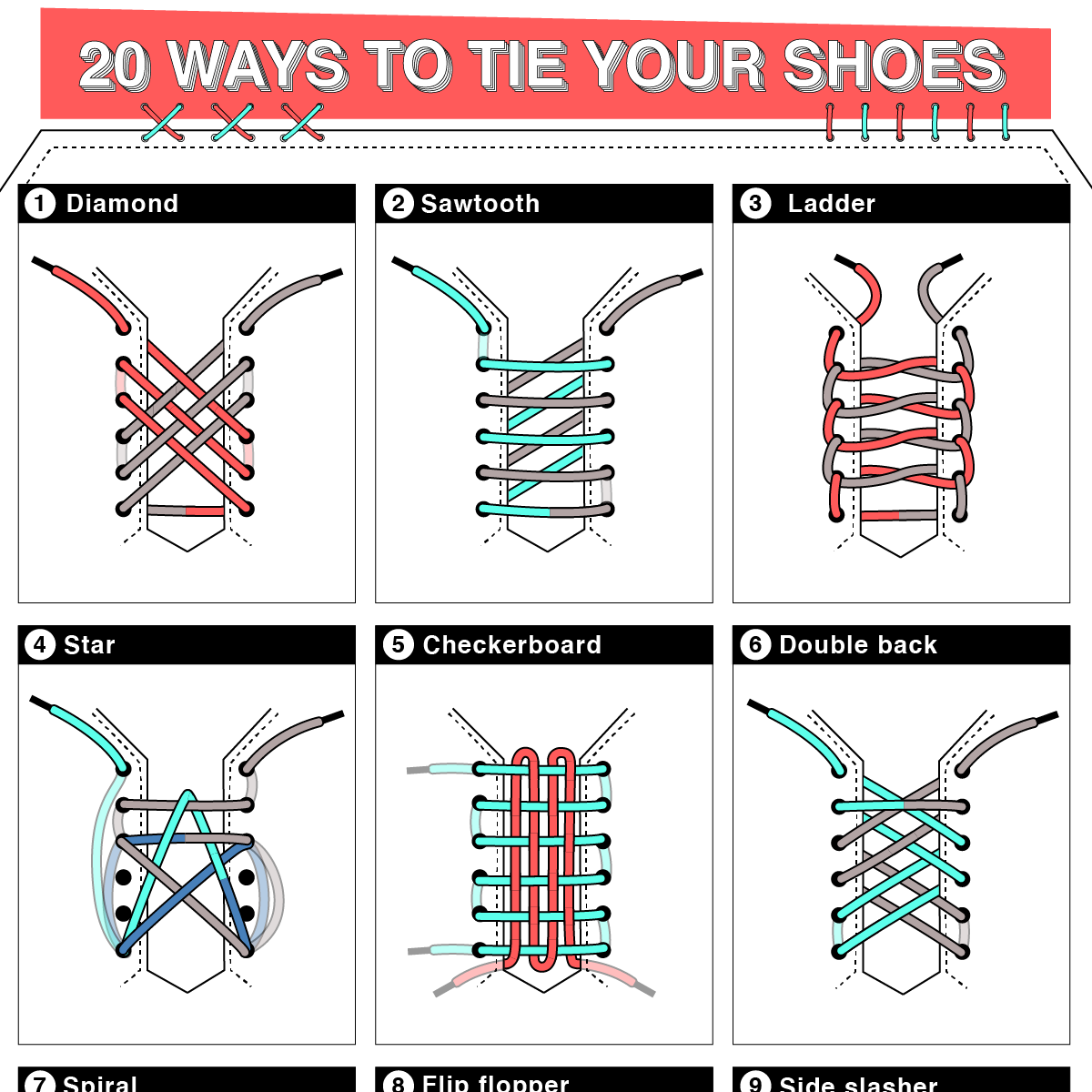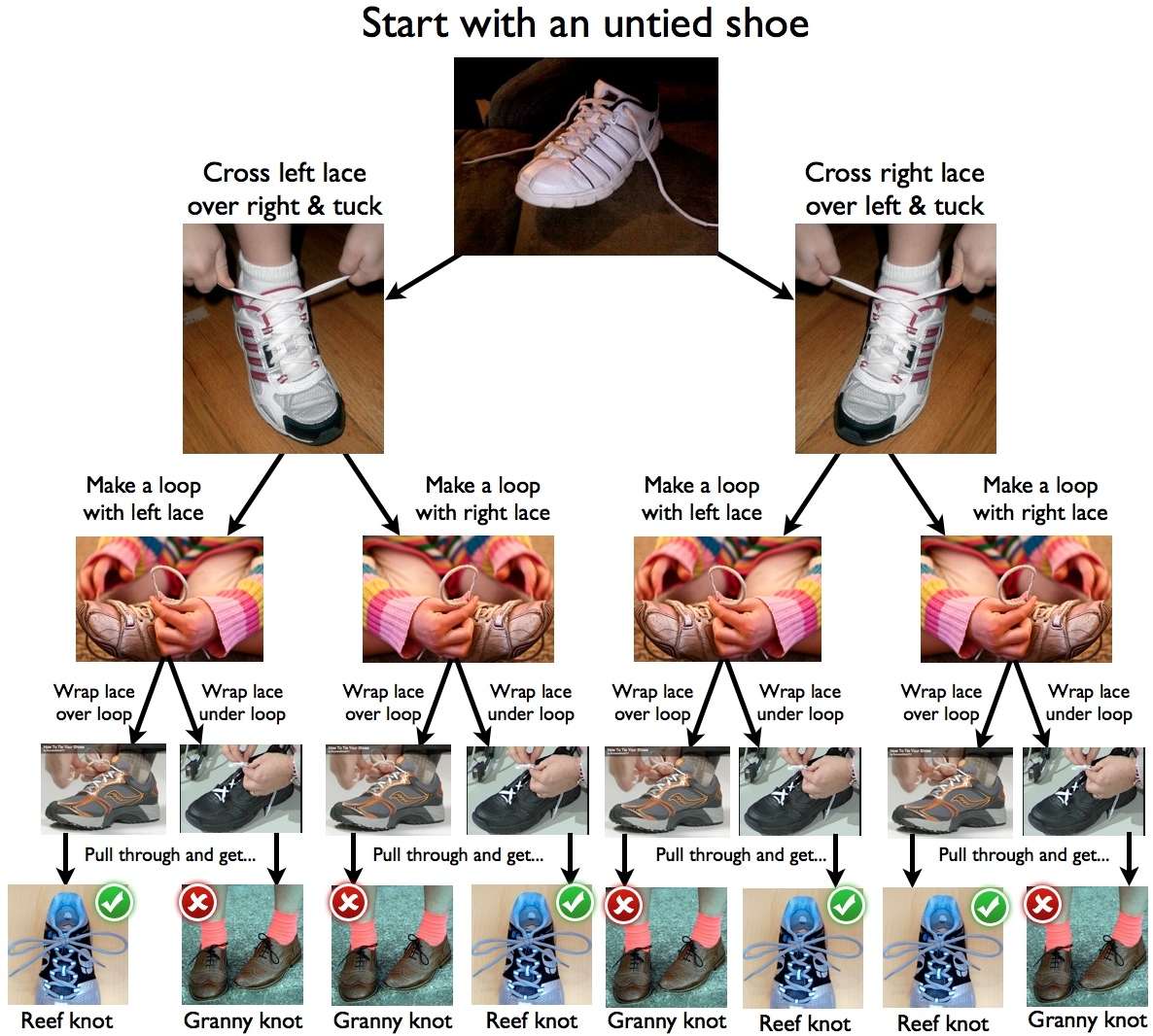Tying your shoes may seem like a simple task, but there are various methods that can not only prevent your shoelaces from coming undone but also reflect personal style. Whether you are running, hiking, or just walking around town, knowing how to tie your shoes correctly is essential. This comprehensive guide will cover a plethora of ways to tie your shoes, including traditional techniques, stylish options, and practical solutions for specific activities.
Understanding the Basics of Shoelaces
Before diving into different methods, it’s important to understand the anatomy of shoelaces. Generally composed of materials like cotton, polyester, or nylon, the choice of shoelace can affect the tightness and durability of your knots. Here are the main types of shoelaces you might encounter:
- Flat Laces: Commonly found in sneakers, these provide a broad surface for gripping.
- Round Laces: Typically used in dress shoes, they can slide easily through eyelets.
- Elastic Laces: Ideal for quick adjustments, often used in children’s shoes or athletic footwear.
Importance of Properly Tying Your Shoes

Properly tied shoes can enhance comfort, improve performance, and prevent injuries. Loose shoelaces can cause tripping, while overly tight laces can lead to discomfort. Here we will explore various techniques tailored to different needs.
Classic Techniques for Tying Shoes

1. The Standard Knot (Bunny Ears Method)
The standard knot is perhaps the most familiar method to many. Here’s how to do it:
- Cross one lace over the other and pull tight.
- Create two loops (bunny ears) with each lace.
- Cross the loops over each other and pull one loop through the hole formed.
- Pull both loops tight to secure the knot.

Pros and Cons of the Standard Knot
| Pros | Cons |
|---|---|
| Easy to learn and execute | Can come undone easily if not tightened properly |
| Widely accepted across various shoe types | May not be ideal for heavy-duty activities |

2. The Double Knot
A step up from the standard knot, the double knot is perfect for ensuring your laces stay put.
- Complete the standard knot.
- Wrap one lace around the other again and pull it through as you did before.

Pros and Cons of the Double Knot
| Pros | Cons |
|---|---|
| Very secure, great for running or sports | Can be difficult to untie |
| Prevents laces from coming undone | May be uncomfortable if laces are too tight |

Creative and Stylish Ways to Tie Your Shoes
3. The Ladder Lacing Technique
This technique is not only functional but also adds an aesthetic appeal to your sneakers.

- Start with the laces in the bottom eyelets.
- Take the left lace, and feed it through the second eyelet on the right side.
- Continue alternating until you reach the top.
Pros and Cons of Ladder Lacing

| Pros | Cons |
|---|---|
| Visually striking and unique | Can make shoes tighter across the top of the foot |
| Even tension distribution | May take longer to tie |
4. The Tartan Lacing Technique
A popular method for those looking to express creativity in their footwear. This lacing technique resembles a tartan pattern.
- Thread the laces through the bottom eyelets.
- Cross the left lace to the second eyelet on the right and vice versa.
- Continue this pattern until reaching the top.
Pros and Cons of Tartan Lacing
| Pros | Cons |
|---|---|
| Stylishly unique | Can create pressure points if too tight |
| Great for casual settings | Not ideal for athletic shoes |
Functional Knotting Techniques for Specific Activities
5. The Surgeon’s Knot
This method is often favored by surgeons for its security, making it suitable for hiking and outdoor activities.
- Start with the standard knot.
- Wrap the laces around each other twice before pulling tight.
Pros and Cons of the Surgeon’s Knot
| Pros | Cons |
|---|---|
| Extremely secure for rigorous activities | Can be a hassle to untie |
| Good for thicker laces | May require practice |
6. The Lock Lacing Technique
Ideal for running, this method prevents slippage and keeps your heel secure in the shoe.
- Thread the laces through the bottom eyelets.
- Before tying the standard knot, create a loop with the laces and pull them through each side.
Pros and Cons of Lock Lacing
| Pros | Cons |
|---|---|
| Prevents heel slippage | Complex for beginners |
| Enhances comfort and performance | May require adjusting after wearing |
Tips for Choosing the Right Lacing Method
Selecting the appropriate lacing method depends on your needs, preferences, and the type of shoes you are wearing. Here are some tips:
- Consider Activity: If you’re running, opt for secure types like double knots or lock lacing.
- Style Matters: Choose creative lacing methods for casual outings to make a fashion statement.
- Fit is Key: Ensure your shoes are snug but not too tight to avoid discomfort.
FAQs About Different Ways to Tie Your Shoes
What is the best way to tie shoes for running?
The lock lacing technique is considered the best method for running, as it helps prevent heel slippage and blisters.
Can different ways of tying shoes help with foot pain?
Yes, techniques like the surgeon’s knot can help alleviate foot pain by providing a more secure fit, reducing movement within the shoe.
Where can I learn more about shoe tying methods?
There are various online resources, including videos and tutorials on platforms like YouTube, that showcase different shoe tying methods in detail.
Is there a method to help children learn to tie shoes?
The bunny ears method is popular among children as it’s easy to remember and visually reinforcing.
Local Experiences and Cultural Insights Related to Shoe Tying
Throughout the USA, tying shoes can have cultural significance. For instance, in urban areas where fashion plays a vital role, unique lacing techniques may be adopted as part of street style. In contrast, athletes in sporting communities may prioritize functional methods that enhance performance during competition.
In some regions, parents often teach their children to tie their shoelaces as a rite of passage, marking the transition from toddler to an independent learner. Understanding these nuances may enhance your appreciation for the simple yet significant act of fastening your shoes.
Citations
For further reading and understanding, consider the following trustworthy sources:
- A Study on Footwear and Injuries – National Center for Biotechnology Information
- Shoe Fit and Foot Health – American Academy of Family Physicians
- Proper Shoe Fit Guide – American Podiatric Medical Association
In conclusion, whether you prefer classic methods or innovative techniques, knowing how to tie your shoes effectively can enhance your comfort and style. Experiment with different methods to find the one that best suits your needs and enjoy walking confidently with every step you take!